
CELL AND TISSUE BANKING
Scope & Guideline
Connecting research and practice in cell and tissue banking.
Introduction
Aims and Scopes
- Biobanking Practices:
Research on the establishment, management, and optimization of tissue banks, including the collection, storage, and distribution of human tissues and cells for clinical and research purposes. - Cryopreservation Techniques:
Studies investigating various cryopreservation methods and their effects on tissue viability, functionality, and long-term preservation, including the use of cryoprotectants and the impact of freezing protocols. - Tissue Engineering and Regeneration:
Exploration of innovative scaffolds, biomaterials, and cellular therapies aimed at regenerating damaged tissues and organs, focusing on the integration of stem cells and extracellular matrix components. - Clinical Applications of Allografts and Xenografts:
Analysis of clinical outcomes related to the use of allogeneic and xenogeneic tissues in surgical procedures, including the evaluation of graft integration, rejection rates, and patient outcomes. - Ethics and Public Perception of Donation:
Investigations into the ethical considerations surrounding tissue donation, public attitudes towards organ and tissue donation, and the implications for biobanking practices.
Trending and Emerging
- Integration of Nanotechnology in Tissue Engineering:
Studies exploring the use of nanomaterials and nanotechnology in enhancing tissue scaffolds and improving cellular responses are on the rise, indicating a trend towards more sophisticated biomaterials. - Personalized Medicine Approaches in Tissue Banking:
Research focusing on personalized medicine, including tailored treatments using patient-specific tissues and cells, is emerging as a significant theme, aligning with broader trends in individualized healthcare. - Impact of COVID-19 on Tissue Banking Practices:
The pandemic has prompted a surge in research examining the effects of COVID-19 on tissue donation, storage protocols, and the safety of handling biological materials, reflecting adaptations to new challenges. - Enhanced Techniques for Decellularization and Recellularization:
Innovations in techniques for decellularizing tissues to create scaffolds for subsequent recellularization are gaining prominence, reflecting advancements in tissue engineering methodologies. - Ethical and Regulatory Frameworks in Biobanking:
Growing attention to the ethical, legal, and social implications of biobanking practices is evident, with a focus on establishing robust frameworks to guide tissue donation and usage.
Declining or Waning
- Traditional Tissue Preservation Methods:
Research focusing on older, less effective preservation methods is declining as newer, more efficient technologies and techniques gain traction in the field. - General Stem Cell Research without Specific Applications:
Broad studies on stem cells that do not tie directly into biobanking or tissue engineering applications are becoming less common, as the focus shifts towards targeted therapeutic uses in regenerative medicine. - Limited Focus on Non-Human Tissue Models:
Research involving non-human animal models for tissue banking is waning, reflecting a shift towards human-specific studies that are more relevant to clinical applications and regulatory standards.
Similar Journals
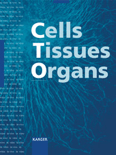
CELLS TISSUES ORGANS
Unlocking the Secrets of Anatomy and Histology.CELLS TISSUES ORGANS is a renowned academic journal published by KARGER, focusing on pivotal research within the fields of Anatomy and Histology. Based in Switzerland, this journal has been disseminating influential scientific findings since 1889, contributing to our understanding of cellular structures and tissue functionality. With a current impact factor that places it in the Q2 quartile for both disciplines, it serves as a vital resource for researchers, professionals, and students seeking to stay abreast of significant advancements and discussions in these areas. The journal embraces an Open Access model, ensuring that high-quality, peer-reviewed articles are freely available, thus enhancing visibility and accessibility of critical research. As it continues to foster scholarly communication and innovation up to 2024, CELLS TISSUES ORGANS plays a crucial role in shaping the future of biological sciences and medical research.
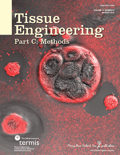
Tissue Engineering Part C-Methods
Transforming Ideas into Practices in Biomedical EngineeringTissue Engineering Part C: Methods is a prestigious academic journal published by MARY ANN LIEBERT, INC, specializing in the dynamic and rapidly evolving fields of bioengineering and biomedical engineering. With an ISSN of 1937-3384 and E-ISSN 1937-3392, this journal provides a platform for the dissemination of cutting-edge research from 2008 to 2024, showcasing methodologies that advance the science of tissue engineering. Ranked in the second and third quartiles across several categories in 2023, including a notable Q2 in Biomedical Engineering, the journal is recognized for its contributions to the interface of biology and engineering. Additionally, it holds commendable Scopus ranks that highlight its influence and reach within the scientific community. Although it does not offer open access, the journal remains vital for researchers, professionals, and students seeking insightful articles that bridge the gap between theoretical research and practical application in tissues and regenerative medicine. With its rigorous peer-review process and commitment to quality, Tissue Engineering Part C: Methods continues to be an essential resource for those at the forefront of tissue engineering innovations.
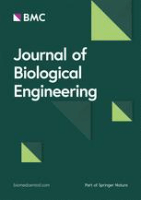
Journal of Biological Engineering
Transforming Ideas into Impactful DiscoveriesJournal of Biological Engineering, published by BMC, stands as a prominent Open Access journal since 2007, dedicated to advancing the interdisciplinary field of biological engineering. With an ISSN of 1754-1611, this UK-based journal aims to provide a platform for researchers and professionals to disseminate innovative and impactful research across various domains including Biomedical Engineering, Environmental Engineering, Cell Biology, and Molecular Biology. The journal's notable rankings in the 2023 category quartiles exemplify its position within the scientific community, featuring Q2 status in Biomedical Engineering and Environmental Engineering, along with Q3 in Cell Biology and Q2 in Molecular Biology. By maintaining robust Scopus rankings and ensuring free access to cutting-edge research, the Journal of Biological Engineering plays a crucial role in driving discovery and collaboration among scholars, thereby enriching both the academic landscape and applied sciences.
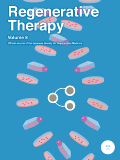
Regenerative Therapy
Transforming discoveries into impactful solutions in regenerative medicine.Regenerative Therapy is a premier open-access journal dedicated to advancing the fields of biomaterials, biomedical engineering, and developmental biology. Published by Elsevier in Japan, this journal has been an influential platform since its inception in 2015, contributing significantly to the global discourse on regenerative medicine. With an impressive Q2 ranking in major categories such as Biomaterials and Biomedical Engineering, it is recognized for its quality of research and innovation. Researchers seeking to disseminate their findings or explore cutting-edge developments will find Regenerative Therapy to be invaluable, reflecting current trends and fostering collaborations across interdisciplinary boundaries. The journal offers open access, ensuring that high-quality research is available to a broad audience and enhances the impact of scholarly work in the regenerative medicine community.
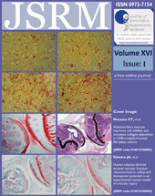
Journal of Stem Cells & Regenerative Medicine
Bridging Research and Clinical PracticeThe Journal of Stem Cells & Regenerative Medicine is a leading publication dedicated to the advancing field of stem cell research and regenerative medicine. Established in India and published by JOURNAL STEM CELLS & REGENERATIVE MEDICINE, this Open Access journal has been available since 2007, providing researchers and practitioners with free and unrestricted access to high-quality articles. With an ISSN of 0973-7154, the journal is indexed in Scopus, featuring a wide array of topics and insights into biochemistry, biotechnology, cell biology, and molecular biology, as denoted by its relevant quartile rankings. This journal is committed to bridging the gap between laboratory research and clinical applications, making significant contributions to the scientific community. The convergence of innovative studies from 2010 to 2024 positions it as an invaluable resource for those looking to stay at the forefront of stem cell and regenerative medicine research.
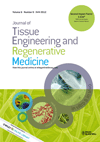
Journal of Tissue Engineering and Regenerative Medicine
Bridging engineering and medicine for transformative health.Journal of Tissue Engineering and Regenerative Medicine, published by WILEY, stands as a pivotal platform in the fields of biomaterials, biomedical engineering, and regenerative medicine. With an ISSN of 1932-6254 and an E-ISSN of 1932-7005, this journal, based in the United Kingdom, has consistently delivered high-quality research since its inception in 2006, converging critical insights through 2024. With an impressive citation profile reflected in its Scopus rankings—specifically a rank of #58 in Medicine and #75 in Biomedical Engineering—the journal is acknowledged for its substantial impact, as demonstrated by its competitive quartile standings in 2023. Notably, it maintains a Q3 ranking in Biomaterials and Q2 in both Biomedical Engineering and Medicine (miscellaneous), showcasing its influence and relevance in the rapidly evolving interplay between engineering and medicine. The journal serves as a vital resource for researchers and practitioners aiming to stay abreast of innovations and breakthroughs in regenerative therapies, tissue scaffolds, and biomaterials. While not an open-access publication, it fosters academic dialogue and knowledge dissemination that is crucial for advancing the field.
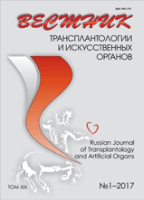
Vestnik Transplantologii i Iskusstvennyh Organov
Bridging knowledge and innovation in organ transplantation.Vestnik Transplantologii i Iskusstvennyh Organov, published by the Federal Research Center Transplantology & Artificial Organs V I Shumakov, is an esteemed open access journal that has been disseminating critical research in the fields of transplantation and immunology since 2009. With an ISSN of 1995-1191 and E-ISSN 2412-6160, this journal serves as a vital resource for academics and practitioners alike, offering insights into current trends, innovations, and methodologies in organ transplantation. The journal is indexed in prominent databases, holding a Q4 category in Immunology and Allergy and a Q3 in Transplantation as of 2023, ranking 42nd out of 54 in the field of Medicine - Transplantation, and 208th out of 233 in Medicine - Immunology and Allergy. Through its commitment to open access publishing and its strategic focus on advancing the science of transplantology, Vestnik Transplantologii i Iskusstvennyh Organov contributes significantly to the global body of knowledge, promoting collaboration and engagement among researchers, healthcare professionals, and students from around the world.

Stem Cells International
Exploring Breakthroughs in Stem Cell TechnologyStem Cells International is a premier open access journal published by HINDAWI LTD, focusing on the rapidly evolving field of stem cell research. With an ISSN of 1687-966X and E-ISSN 1687-9678, this journal has been a vital resource since its inception in 2010, showcasing innovative studies and breakthroughs up to 2024. Positioned in Q3 in Cell Biology and Q2 in Molecular Biology for 2023, as well as well-ranked in the Scopus database, the journal serves as an essential platform for researchers, professionals, and students dedicated to exploring the implications of stem cell technology in regenerative medicine and biological research. The open access model ensures wide accessibility, fostering collaboration and knowledge-sharing across the scientific community, making it a cornerstone in advancing the understanding and application of stem cell science.
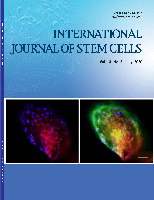
International Journal of Stem Cells
Unlocking the Potential of Cell BiologyThe International Journal of Stem Cells is a distinguished peer-reviewed journal dedicated to advancing the field of stem cell research. Published by the Korean Society for Stem Cell Research, this journal has established itself as a vital source of high-quality research since its inception in 2008. Operating under the ISSN 2005-3606 and E-ISSN 2005-5447, the journal caters to a global audience, featuring works that span a diverse array of topics within Cell Biology and Developmental Biology. It is noteworthy that as of 2023, the journal is ranked Q3 in Cell Biology and Q2 in Developmental Biology, highlighting its growing influence and credibility in the scientific community. Given its commitment to facilitating open scientific communication, it is crucial for researchers, professionals, and students to engage with the rigorous research published in this journal as it profoundly impacts the understanding and application of stem cell science. With accessibility to a wealth of innovative studies, the International Journal of Stem Cells remains an indispensable resource for anyone interested in the transformative potential of stem cell research.
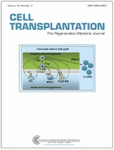
CELL TRANSPLANTATION
Fostering breakthroughs in biomedical engineering.CELL TRANSPLANTATION is a premier multidisciplinary journal dedicated to advancing the field of regenerative medicine and transplantation, published by SAGE PUBLICATIONS INC. Since its initiation in 1992 and embracing an open-access model since 2017, the journal aims to disseminate high-quality research that covers both clinical and experimental studies on cell and tissue transplantation. With a notable impact reflected in its 2023 Q2 ranking in Biomedical Engineering and significant standings in Cell Biology and Transplantation, CELL TRANSPLANTATION serves as a vital resource for researchers, practitioners, and students alike. The journal's commitment to fostering innovation is evident in its diverse contributions that address the complexities of tissue engineering, immunology, and regenerative therapies, inviting readers to engage with cutting-edge science that is poised to transform medical practices and improve patient outcomes. The journal's insightful articles and research findings make it a crucial platform for knowledge exchange within the vibrant scientific community.